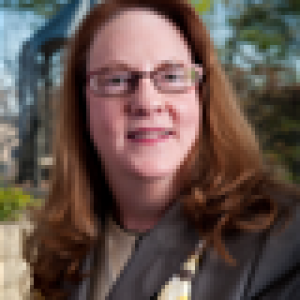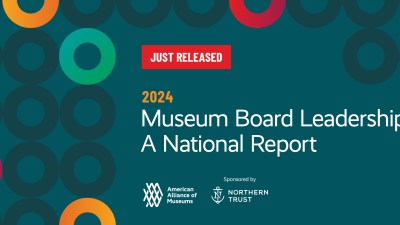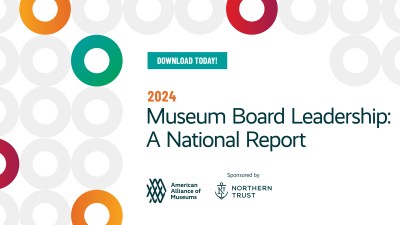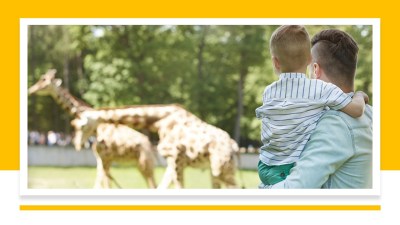Nik Honeysett recently addressed members of the Leadership and Management Network at their luncheon at the annual AAM Conference. I asked Nik to share his thoughts on museums and IT in a way only a non-IT person could ask. Nik accommodated beautifully.
Nik is CEO of the Balboa Park Online Collaborative, a non-profit consultancy that provides technology support, development and strategy for the museums in Balboa Park, San Diego and beyond. Previously, he was Head of Administration for the J. Paul Getty Museum overseeing administrative services across their two sites. He formerly chaired AAM’s Media and Technology SPC and their SPC Council; he currently sits on the Board of AAM.
Blog: The Recovering Technologist
Twitter: @nhoneysett
How long have you worked in the museum field and have you always been in the IT arena? 
Despite my youthful looks, I’ve been in the museum field for twenty-seven years, but I should qualify that. In the mid-eighties I joined a tiny software startup company called Cognitive Applications as a software programmer; they were and are a for-profit company that started out of the Cognitive Sciences Department at the University of Sussex in the UK. Its purpose was to productise[i] a programming language called AlphaPop, applicable to the then current fad of Expert Systems, what we would call knowledge bases now. Expert Systems suffered from bad PR, in that it would replace everyone’s job, so literally overnight we had no market. A chance meeting in a pub in Trafalgar Square London, with a guy who had been hired by the National Gallery to figure out how to use emerging technology (this is 1988) to enhance the visitor experience, resulted in us building what was probably the first touchscreen system to present a museum’s collection digitally – the MicroGallery. I spent the next twelve years working exclusively in museums and galleries building digital systems in all their various forms for public access. I worked all over Europe and the USA, including the National Gallery in Washington DC and the San Diego Museum of Art in the early 1990s.
I moved from the for-profit world to the non-profit world in 2000 when I joined the Getty as an IT manager, and then moved into an administrative role in 2006; still with a strong connection to digital, which reported to me. The resources available at the Getty when I first joined were even more prodigious than they are today. I got to work on some amazing projects.
You have been at BPOC for nearly a year now. What do you enjoy most day-to-day, vs working in a single museum?
There’s a certain amount of monotony working in a large institution, or maybe regularity is a better term. When I announced that I was leaving the Getty most people thought that I had taken leave of my senses, but I could feel myself getting soft; the Getty is a place where one can coast and that is not in my nature, so I needed a new challenge and that is exactly what I have now. BPOC supports most of the cultural institutions in Balboa Park ranging from volunteer-only museums like the Veterans Association and Memorial Center to the San Diego Museum of Art and the San Diego Museum of Natural History, and that makes for a different day every day. Every day is a gear-shifting experience, but the business model of BPOC makes for a very rewarding experience. How many volunteer-only museums have access to enterprise-grade technology and development services? The Veterans Museum is a great example; they have a cutting-edge, responsively-designed website that cost them a fraction of normal development costs because we are spreading the cost of the website redesign and development across five institutions. Their compromise is a website that has a similar functional look and feel to others, but I think that is a small price to pay.
One of the compelling reasons for me to leave the Getty and take on this role at BPOC was the opportunity to create a unified digital strategy for Balboa Park. As a supporter of the adoption of digital within the museum field, it was an opportunity I couldn’t pass up. If I can create a unified approach to the digital experience that aggregates all the cultural organisations in the park, we have a model for the field. That is really exciting. At the moment I’m fundraising for this initiative and that is something that I never had to do at the Getty, not surprisingly, but is something that I really enjoy. Sharing a big vision with individuals who have a passion for Balboa Park and its success is very rewarding. Modesty prevents me from saying how successful I’ve been so far, but I’m very excited about the future and the real potential to create a defining digital infrastructure.
Can you explain your “big vision” for this unified approach to the digital experience at Balboa Park?
From the visitor’s perspective, a visit to Balboa Park is an encyclopedic experience. If we want to give the visitor a unified digital experience, it means we need a unified digital strategy, and that means a unified digital infrastructure. So my vision has three components, which are best thought of as levels, and a key philosophy in this vision is the notion of managing content as an asset in much the same way that we manage digital surrogates of our collection images as assets. The base level will be a rigorous information architecture that preserves and sustains the park’s data and intellectual property (there is much digital deferred maintenance here). Above that level is an institutionally-agnostic expression of this content that promotes serendipity and discovery through rich connections, available as a single website. If you’re familiar with Spotify (a music discovery framework), think of that but with cultural objects and content. Lastly is an institutionally-specific expression of content in the form of a way-finding app that translates those Spotify-type playlists into physical tours of the Park–I want to create an experience that literally helps visitors lose themselves in Balboa Park in the same way that I lose myself in Spotify following musical or artist connections. That’s the essence of my vision, and my working title for the project is Lost in Balboa Park.
What would you say is the one thing museums miss or neglect as they approach or try out technologies in various public programs/exhibits/etc.?
Confining my answer to one thing is going to be difficult. But if I had to pick one, it would be philosophical, and that museums approach digital and technology in the same way that they approach exhibition programing – a defined project that has a start, middle and end. They have created these instances of digital expressions of the collections and content that are massively unsustainable, disconnected to their central collections management system, and thereby costly to maintain appropriately. To understand this approach, you have to look at how digital and technology “infiltrated” museums. It started out as this kind of underground movement, where the guy who had a computer at home became the IT Guy, the exhibition or book designer became the WebMaster, and other interested folks started taking on these digital roles in addition to their day jobs. The biggest problem with this was and still is the fact that senior leadership were taught that all this digital stuff happens for free, and now digital has reached a critical mass and is fundamental to virtually all museums’ activities and operations; and it’s time to pay the piper. These deferred maintenance issues in museums are significant and opportunities for investment are low. What is required is a solid investment in infrastructure to support their digital activities. A robust technological infrastructure that balances the needs of the institution to manage its business and core programmatic activities with the need to express and provide access to content should be a key strategic goal for museums.
Can you identify any exciting technology trends that are going to really benefit the museum community? What excites you the most when you look at what may be coming?
There are a few things that are restoring my faith that museums will figure this out; necessarily some of these are external influences that I think are important to drive change within the field. From a philosophical standpoint, there’s emerging acknowledgement that digital audiences are just as important as physical audiences. For example, the Council of Australasian Museum Directors talks about museum visitorship holistically: 51 million museum visits for the 2014 fiscal year, of which 70% were online. This is a crucial and valuable mindset change for museums, particularly in assigning operational money to digital activities. The 2015 Horizon Report for Museums acknowledges that technology is becoming a focal point of budgetary considerations, and museums are and should begin to consider long-term plans that invest and expand on their infrastructure and digital tools.
There are a couple of external forces working to help focus the field that might be painful but are nonetheless necessary. Museums need to be tracking trends and initiatives outside their walls and none is more significant than Google. Two recent announcements to favour quality content and relegate mobile-unfriendly websites to the wayside should be calls to action for museums. Emerging generations’ primary access to the web is through a smartphone, as is underserved and minority groups’ access; desktop access is rapidly diminishing. These emerging generations and demographics are very discerning and adoption and use of a museum’s content is as much about accessibility and functionality, as it is about the resonance of the content. They will equally judge the quality of a museum’s bricks and mortar experience with their web experience, to the extent that they will make a decision to visit based on the mobile experience. This should be a wake-up call.
The other thing I see that I hope the museum field takes very seriously is the emergence of companies like MuseumHack that provides museum tours. This has nothing to do with technology or digital, though it will, but is a bellwether of the state of interpretation in our field. How is it that a company can come into a museum (the Met in this case, but others too) and charge $60 or $70 per person for something that the museum is giving away for free? MuseumHack is leveraging the emerging trend of “experiences” that emerging generations are craving. Museums are in danger of losing control of how visitors experience their collections, which I find fascinating, and hope that museums take this seriously.
Follow Nik’s blog Recovering Technologist and @nhoneysett on Twitter.
[1] In deference to Nik’s British heritage, I maintained the British spelling of words. (Although I did have to be convinced that “productise” is a real word.)—editor
Betty Brewer serves as President and CEO of Minnetrista, a 40-acre site with a museum, historic homes and gardens. She has held this position since 2005. Ms. Brewer has served the museum field for 30 years, including being a past chair of the Leadership and Management Professional Network and presenting sessions at national, regional, and state conferences and webinars.









Comments